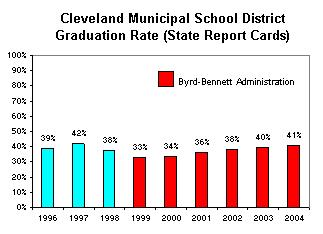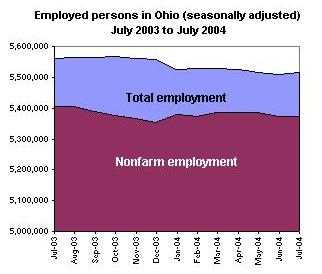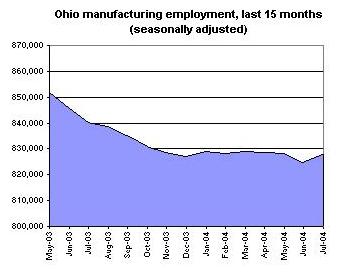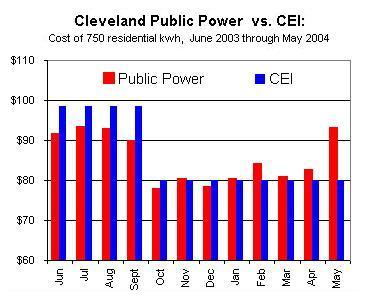To be fair, the Census makes it quite clear that these annual updates are "estimates" with big error margins. But this hasn't stopped the Plain Dealer and others from leaning hard on this year's ACS "Ranking Tables" to sound the alarm about income and poverty in Cleveland.
One side of my brain says, great, it's about time! But the other side has been staring at four years of ACS Data Profiles for Cleveland -- on which the Ranking Tables are based -- and thinking, there's something strange here.
Just two examples:
1. The city's population living in households, according to the ACS estimates, was 468,389 in 2000; sank to 455,396 in 2001; jumped back up to 464,814 in 2002; and then plummeted to 424,948 last year.
2. The number of households in the city, according to the ACS estimates, was 186,435 in 2000, 184,358 in 2001, 189,171 in 202, and 186,708 in 2003.
Thus while the city supposedly lost 44,000 residents in the past three years, we supposedly gained nearly 300 households in the same period.
Do you think Cleveland lost nearly 10% of our population between 2000 and 2003? Unless we did (which would be much bigger news than being 68th rather than 65th in the "poorest cities" list), there's something badly wrong with the Census' survey techniques... wrong enough to make all the numbers dubious. If they don't have a good approximation of the number of Cleveland households, how can we rely on their estimate of those households' median income?
If anyone reading this can offer an informed explanation, I'll be overjoyed to print it. Meanwhile, though, I'm afraid we need to take the whole ACS thing with a large helping of salt.
DOES THIS MEAN CLEVELAND ISN'T REALLY ALL THAT POOR? No, it does not. As I pointed out a couple of days ago, Cleveland's place at the bottom of the big-city income pile was clearly established by the regular 2000 Census, and all the data was available over two years ago. It's laid out in excruciating detail in Cleveland Wages Pages (which I cleaned up a little over the weekend, moving the Yahoo ad boxes out of the way).
We didn't learn anything new about Cleveland's poverty last Friday. The media has just gotten around to telling everyone about it.
So... the Mayor has responded by calling a "working summit" on poverty this Friday morning to...
work in concert with the Center for Community Solutions to identify the best practices in lifting Cleveland out of poverty. The working group will develop and implement a comprehensive strategy to attack poverty in the City of Cleveland.This is a discussion the city needs, and if the Mayor is finally ready to kick it off, more power to her.
But let's hope it doesn't stay in one meeting room. Let's hope it spills out into next year's City election, forcing candidates in 2005 to debate the one issue that really matters in Cleveland: Why are so many of us so poor, and what can we do as a community to enable our citizens to make more money?
Some of my answers next time. Meanwhile, take a look at MaryBeth Matthews on sending Cleveland to college.




